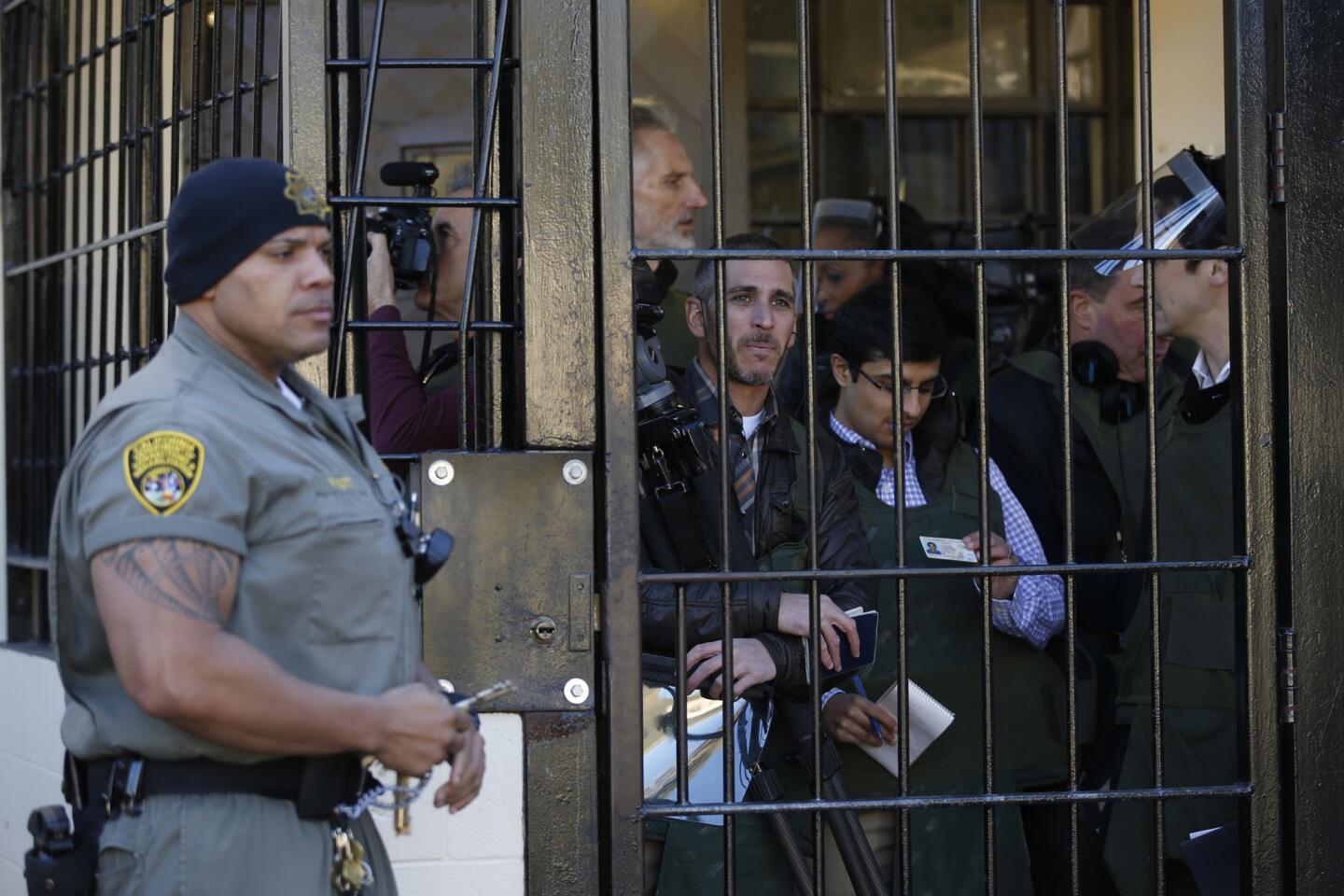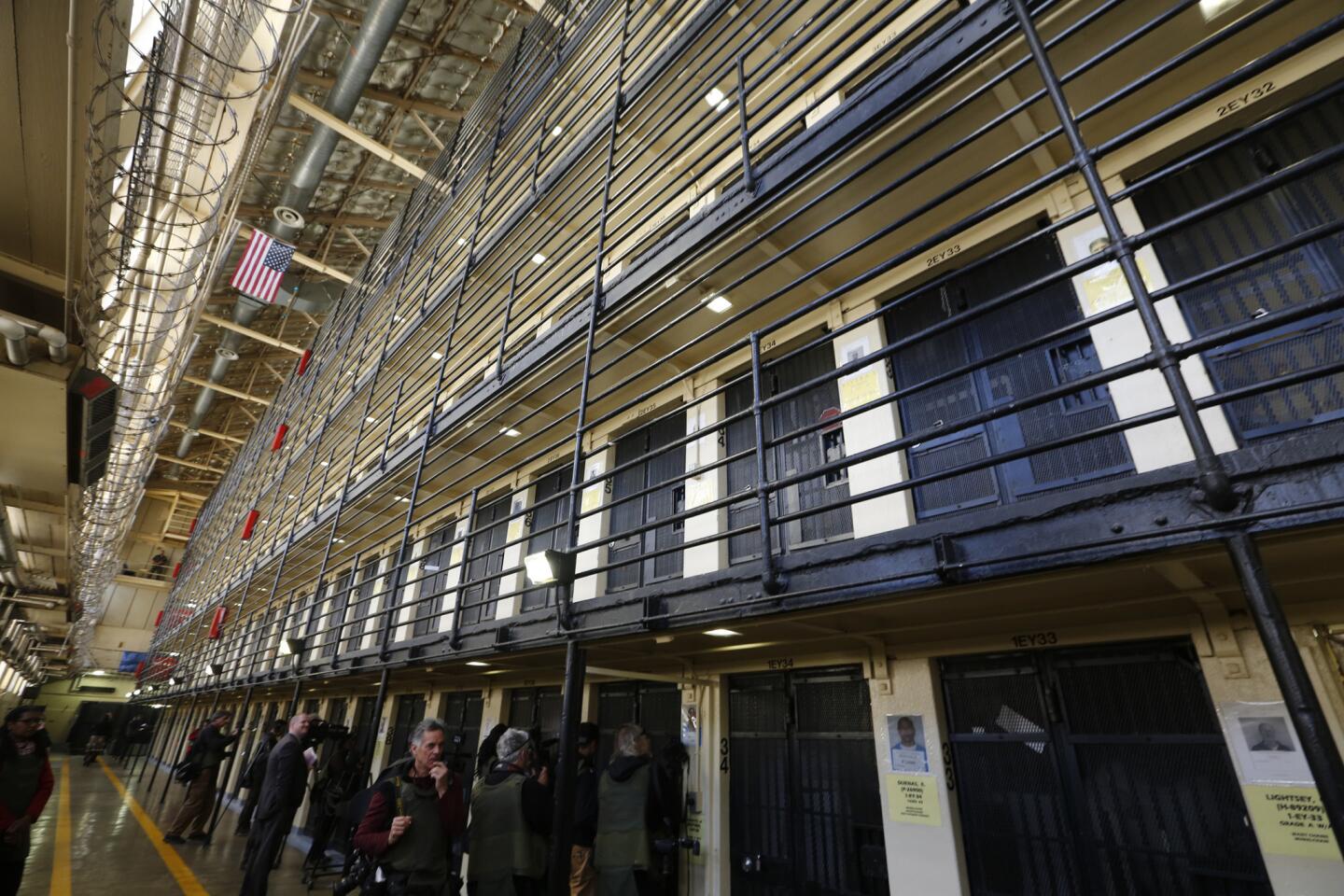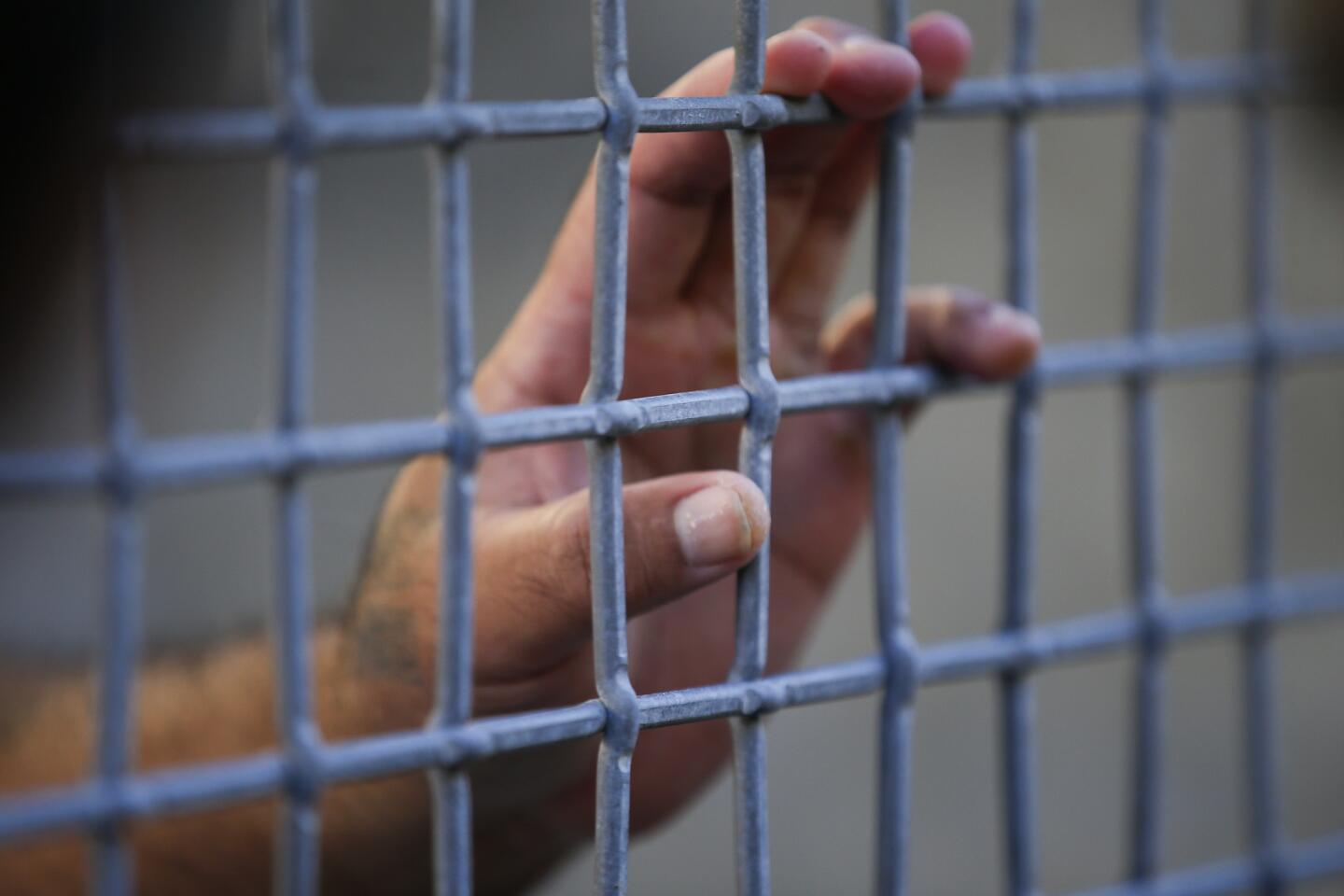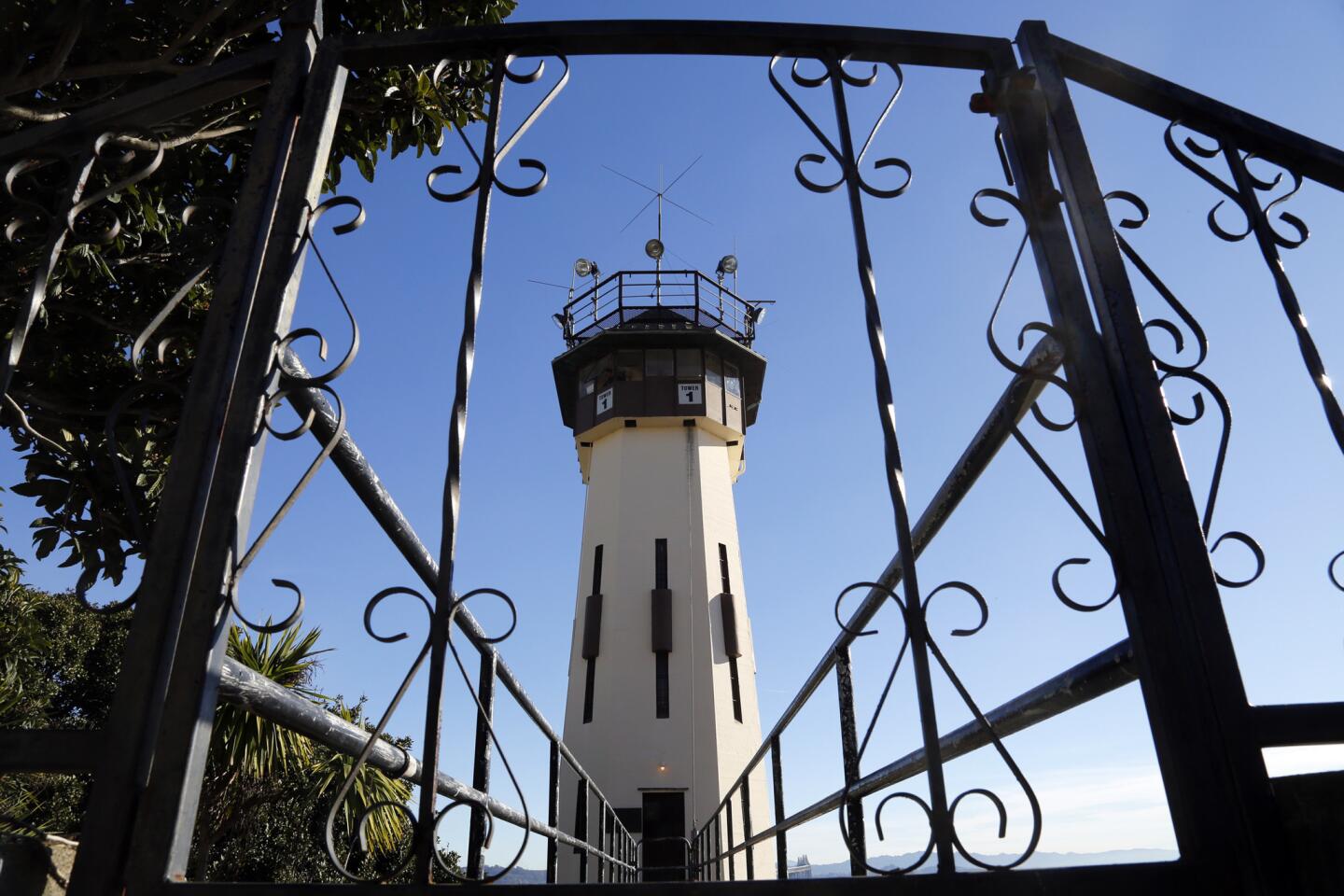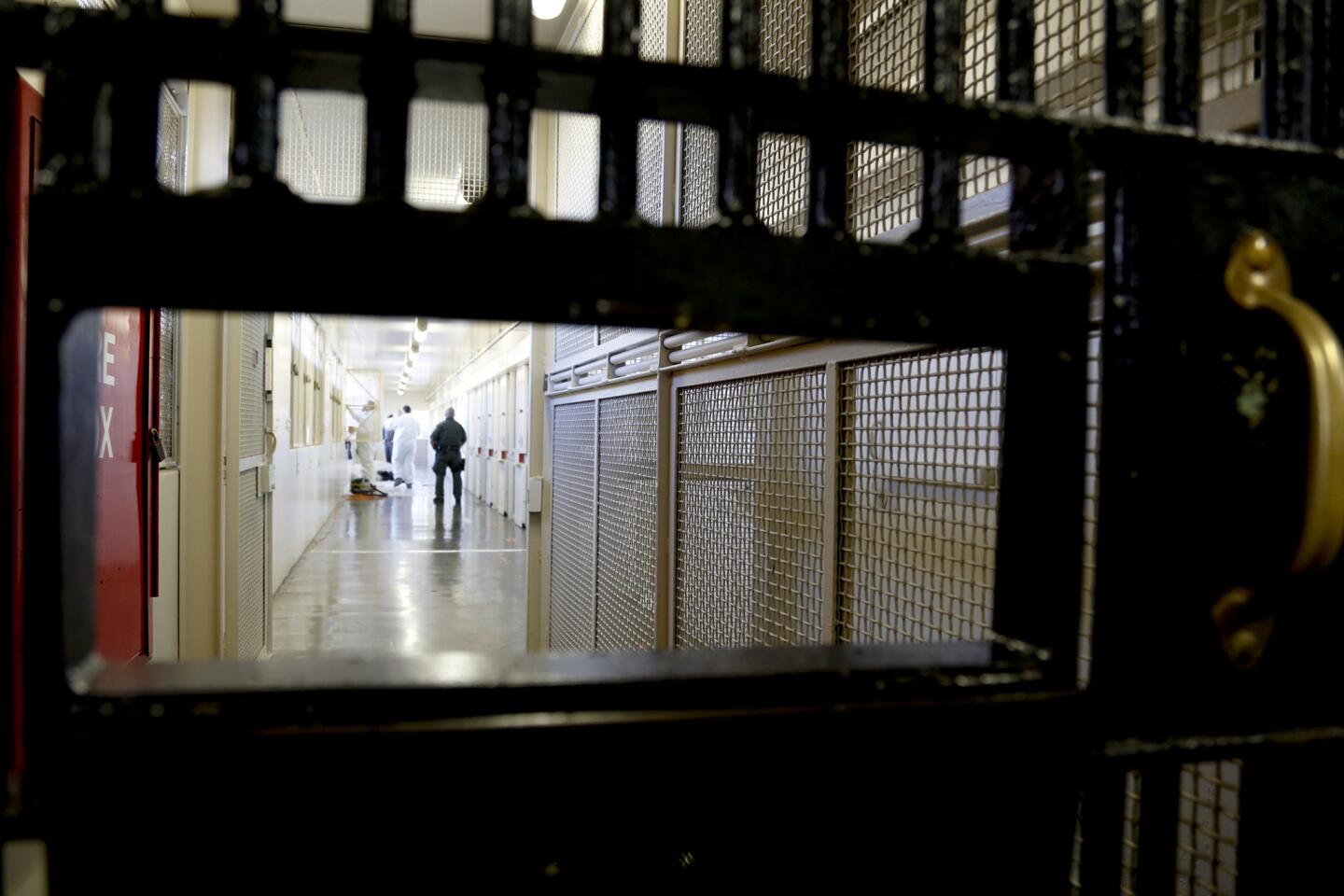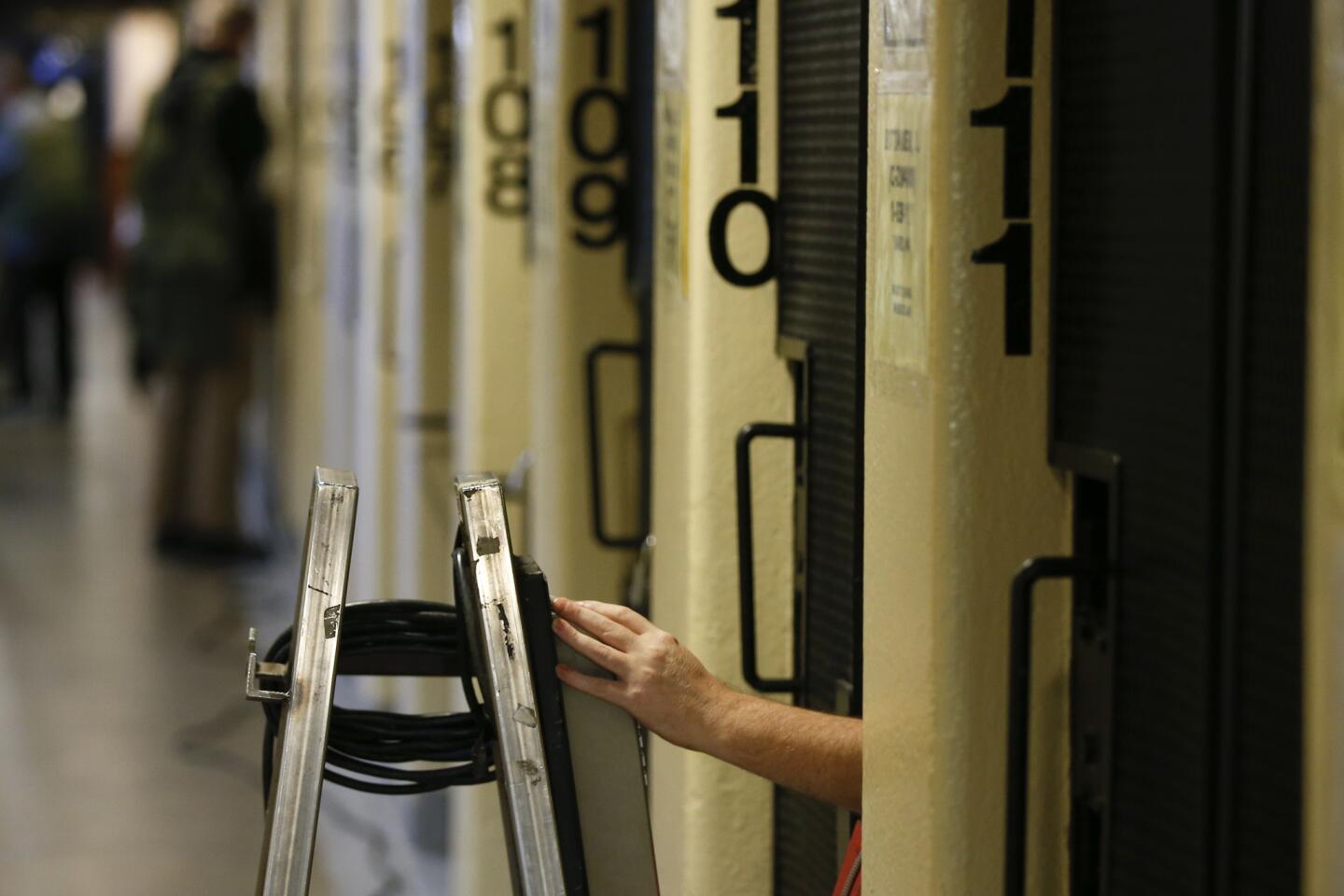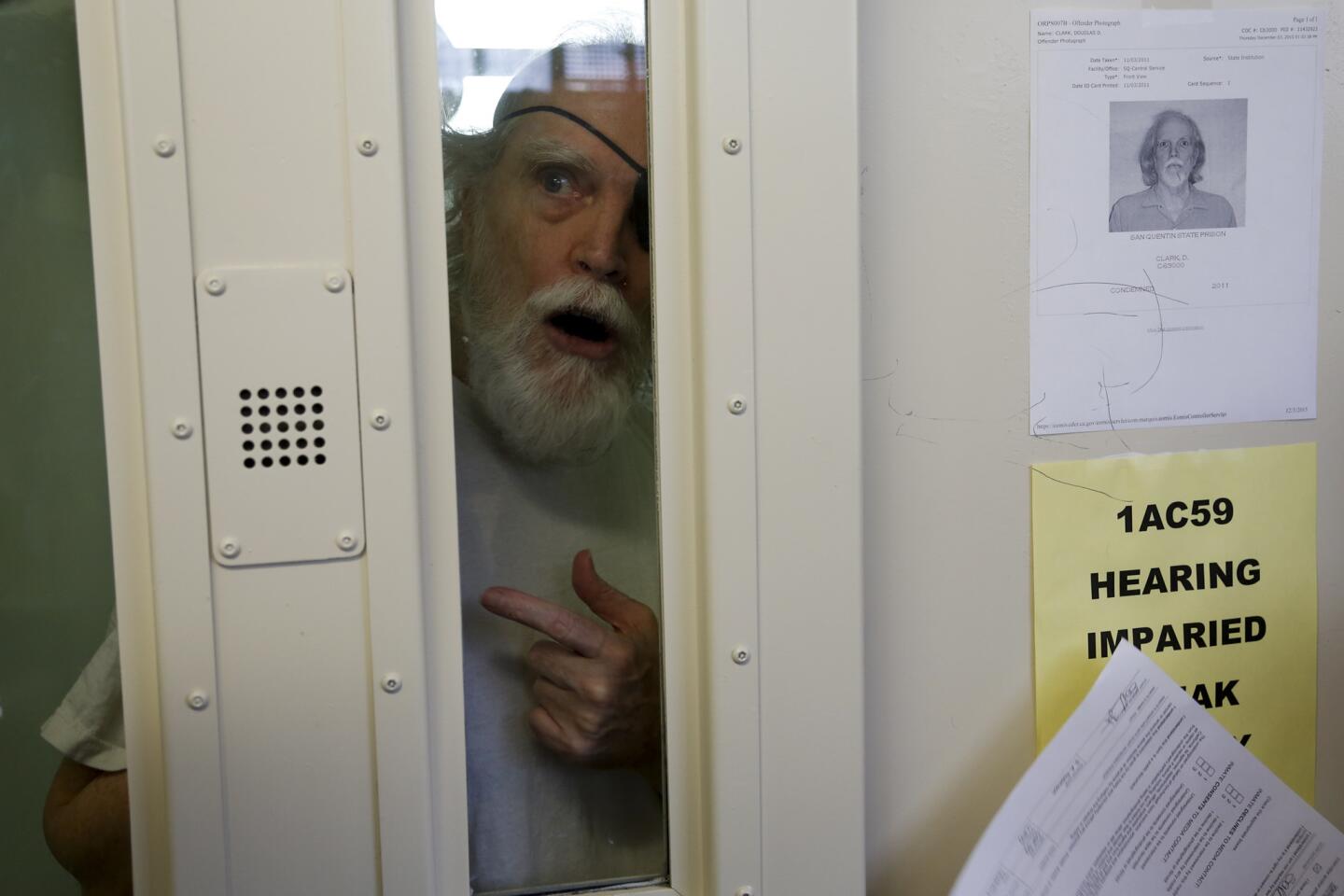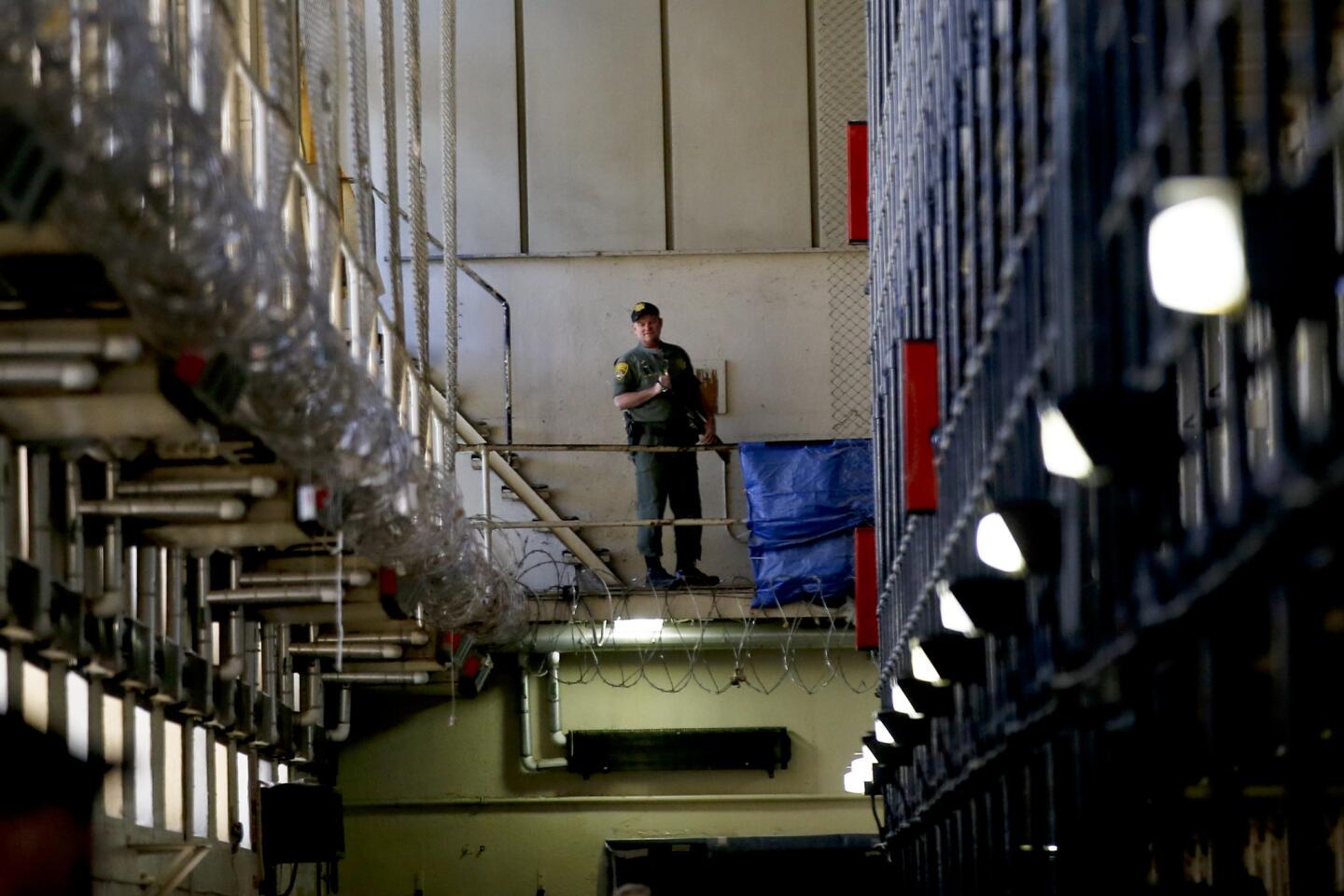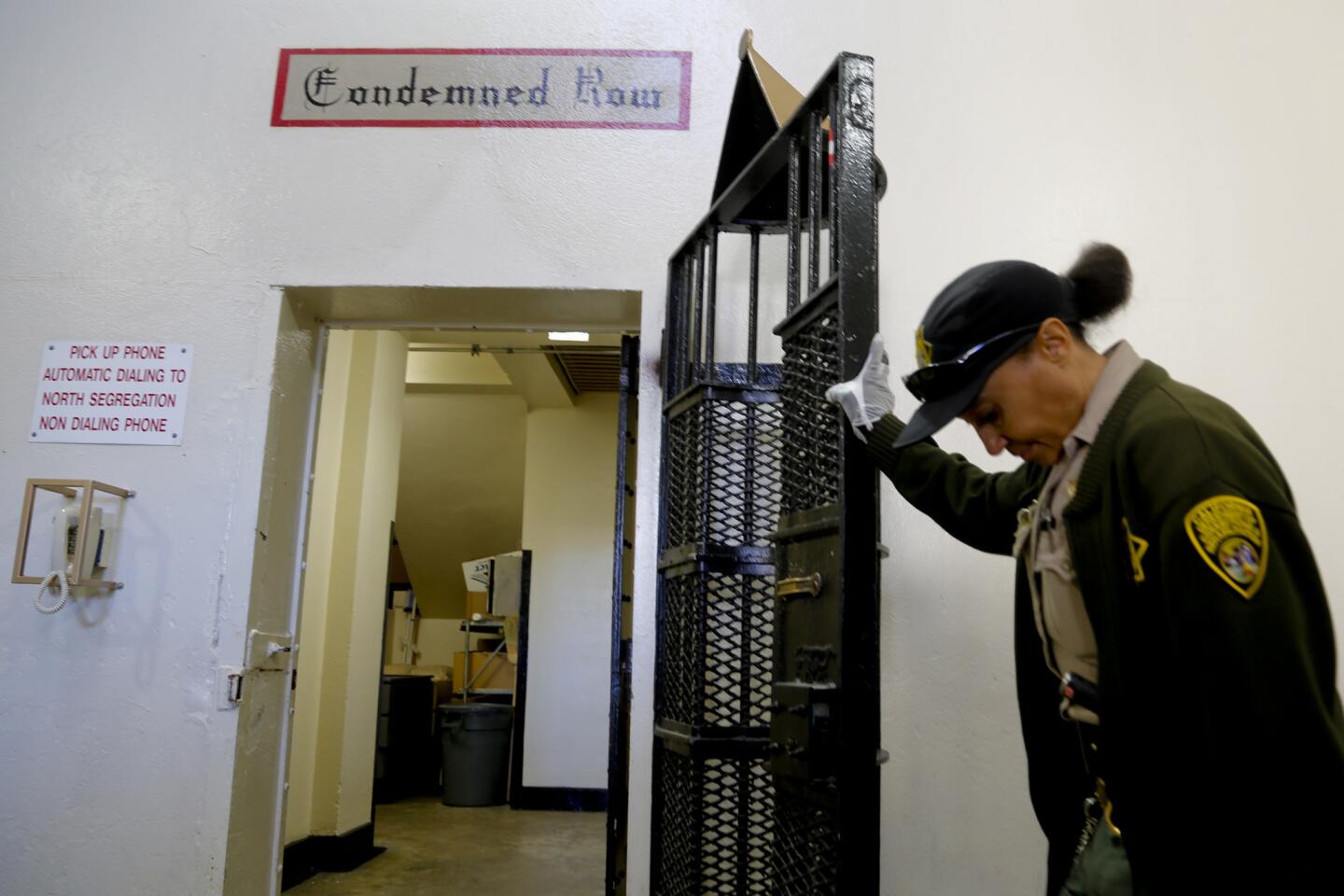A rare peek at San Quentin’s death row, and conversations with inmates awaiting their fates as political battles swirl
Reporting from SAN QUENTIN, Calif. — With the debate over capital punishment in California poised to intensify again in 2016, state corrections officials provided a rare glimpse Tuesday of death row, where hundreds of condemned men await the outcome of legal and political fights that have blocked any executions for nearly a decade.
Corrections Secretary Jeffrey Beard previously denied access to death row, telling The Times it would be too dangerous. But this month he ruled that “there is a legitimate interest” and allowing media access “makes good sense.” On Tuesday, nearly two dozen media members were allowed on portions of death row for about six hours.
They were ushered through the four housing units that hold condemned inmates. Journalists were shown San Quentin State Prison’s crowded and noisy East Block — largely unchanged since its construction in 1930 — and the newly opened death row psychiatric ward, the first of its kind in the nation.
Join the conversation on Facebook >>
In both places, large numbers of men lay curled on their cots, reading or wearing headphones and staring at mute televisions. Some bantered with passing officers. A few were willing to step to the grate of their cell door and sign papers allowing them to talk to reporters.
The state has not had an execution since 2006, and is now taking public comment on a lethal injection protocol that would let executioners decide the killing drug to use based on availability. At the same time, opposing groups are seeking to ask voters in 2016 to speed up executions or disband them entirely.
Almost 700 of California’s 745 condemned inmates are housed at the prison in Marin County.
Lt. Samuel Robinson, a former death row guard who is now the public information officer at San Quentin, said the lives of the condemned are similar to those of other inmates.
“The program runs the same. I don’t think there’s any more desperation. Or any more stress,” he said outside the historic prison’s fortresslike walls. “Life for them is still the same, whatever that time period is.”
But while most California prisoners are housed two to a cell, condemned inmates occupy single cells — sometimes for decades.
Some 500 men live in the cavernous granite-and-steel East Block, where cells are stacked in tiers five high, fronted by narrow steel balconies watched over by armed officers on catwalks.
See the most-read stories this hour >>
Some two dozen wheelchairs sit parked outside the cells of aging men no longer able to walk. All of death row’s inhabitants are allowed access to tennis court-sized exercise yards four times a week, though many decline. The majority of their time, including meals, is spent in cells behind heavy mesh screens.
Death row is off-limits to most of the activities and volunteers that flood the rest of San Quentin with Shakespearean theater, computer coding and jazz. There is no space in the old buildings for such programs — even religious services in the East Block chapel must be held in a converted shower bay.
Inmate Wayne A. Ford, a serial killer, called it “solitary.” He sat cross-legged, naked except for a thick blanket across his lap, on his mat atop the concrete bench that serves as a bed on East Block.
His cell was dark, the light off, and warm air filtered out through the steel grate. Boxes filled the floor, leaving no room to walk, and a guitar, missing a string, was stashed above his steel shelf atop assorted papers.
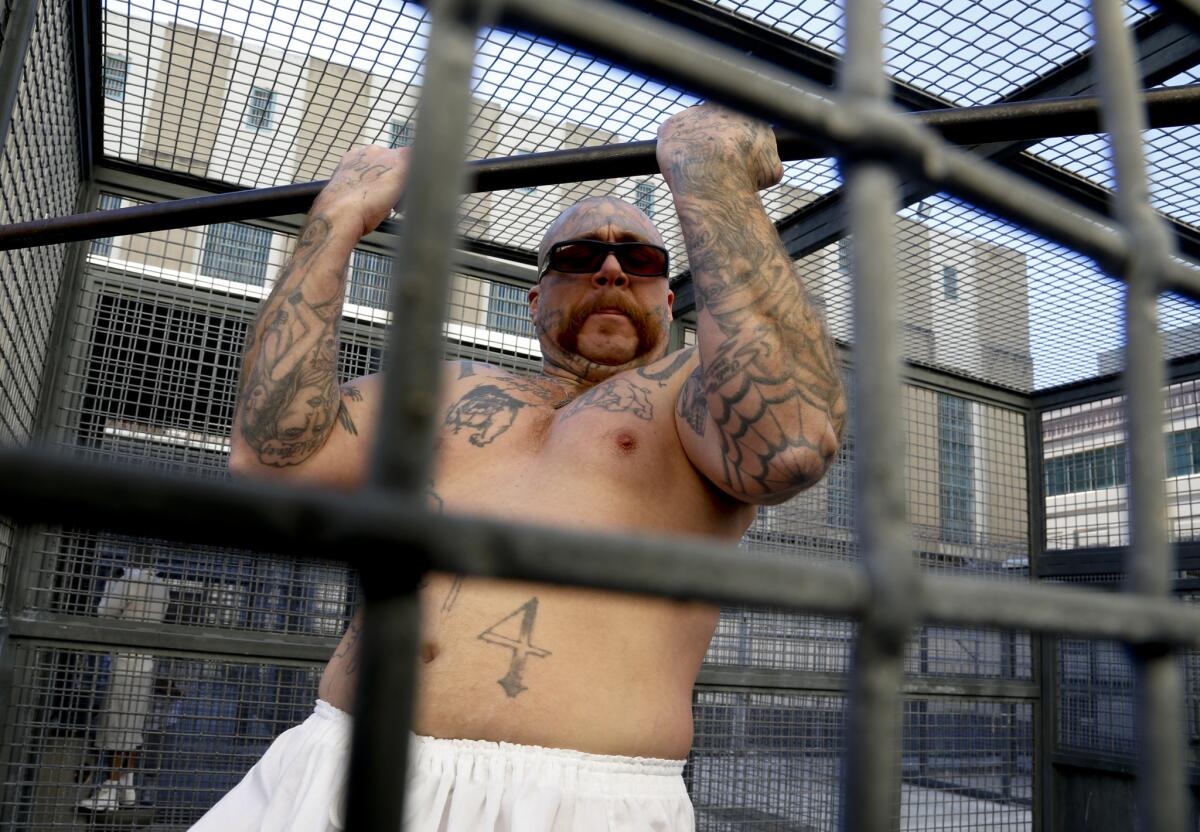
Condemned inmate Robert Galvan gets some exercise in the yard in the Adjustment Center at San Quentin prison.
Ford said he rarely leaves the crowded cell, not even to shower or exercise. He washes at the steel sink attached to his toilet and shuns involvement with most other inmates he sees as gang members or enmeshed in prison culture.
“I was going insane about five years ago,” he said. “I was losing the ability to mirror ... to mirror other people so we can understand what they think.... I’ve lost the ability to enjoy being around other people.”
Mental health services and playing the guitar help. A tiny bouquet of “roses,” fashioned out of bits of colored paper, sits in a small pill bottle for a vase, parked on a steel bar across the front of his cell. He calls it his “little touch of hope.”
Ford, 55, was convicted in 2007 of murdering four women a decade earlier, picking up his victims as a long-haul trucker along the California coast. The day he turned himself in to police in Humboldt County, he had the severed breast of a woman in his pocket.
Other condemned inmates said they dealt with their crimes, and the wait for execution, much differently.
Albert Jones, sentenced to death for a 1993 murder in Riverside County, said he has become a prolific writer, publishing autobiographies on gang life, life on death row, Christian children’s books. A death row cookbook is in production. He said he is pursuing a theology degree and taking business courses.
“The basic thing is, staying busy,” Jones said. “I know they want to kill me. So if I wake up every morning knowing that they’re going to execute me, and seeing that done for five other individuals … for the mentality for me to change that, I had to stay busy.”
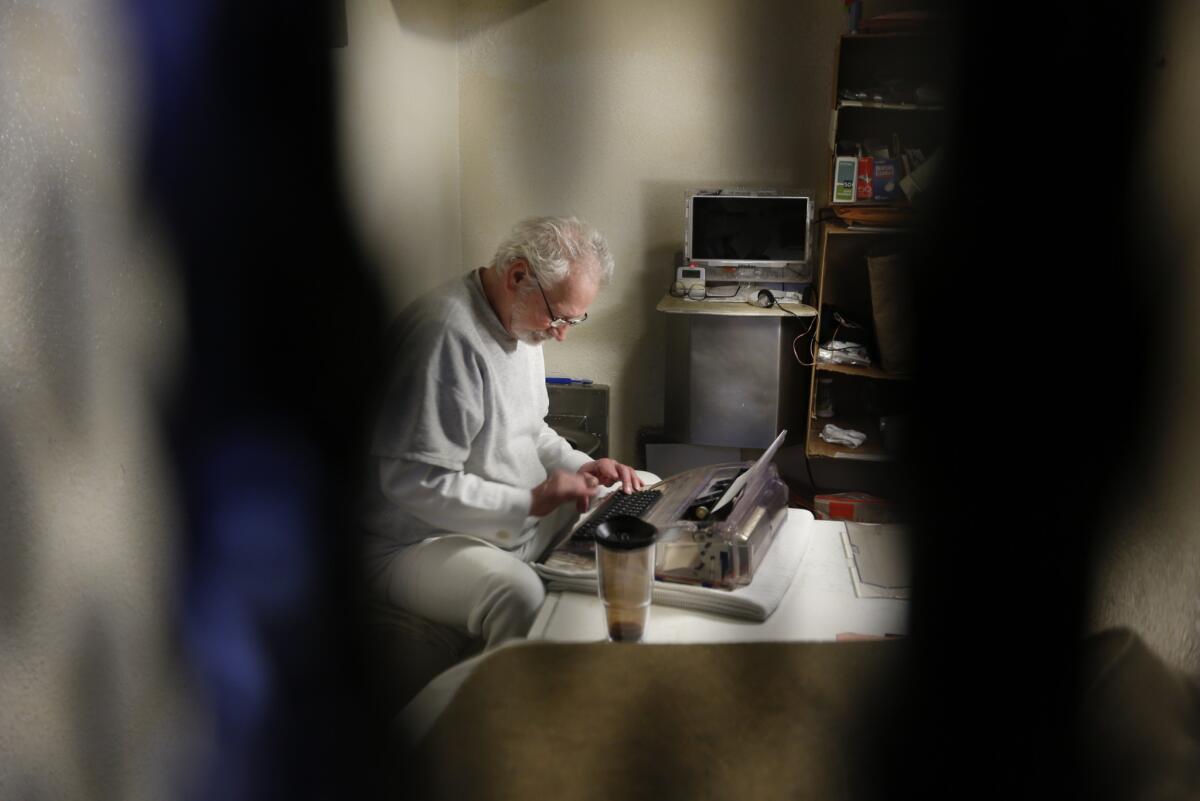
Condemned inmate Charles Case spends some of his time typing in his cell in the East Block at San Quentin prison.
Jones was 29 in 1993 when he and a 15-year-old accomplice entered the home of an elderly Riverside County couple, tied them up and stabbed them to death. The state Supreme Court upheld the conviction in 2011, marking just the first step in a California appeals process that averages more than 25 years. Jones himself said he was still at the beginning of his appeals.
None of the men interviewed Tuesday had completed their state appeals, even those whose crimes occurred more than three decades ago. A federal judge last year ruled such delays were unconstitutional, but an appellate panel this fall overturned the finding, saying the case had not gone through the correct legal procedure.
Steven Livaditis, 51, said he pleaded guilty to killing three people during a Rodeo Drive jewelry store robbery in 1986. He said it is a crime that deserves the death penalty. He said he also became deeply religious while in jail, and on death row, and has come to accept his fate.
“Whatever the outcome, I will assume it is God’s will,” he said from the rooftop exercise yard of North Segregation, where a small number of the state’s best-behaved condemned inmates are housed. From the basketball court, Livaditis has a million-dollar view of the San Francisco Bay.
Behind him, three other inmates turned their backs to the fence to shield their faces from the bank of media cameras. A corrections officer pointed to the back of one man and identified him as Scott Peterson, one of California’s most well-known death row inmates, condemned for the death of his wife and their unborn child.
The execution chamber waiting for them has never been used.
It was built in 2008 to answer concerns raised by courts that California’s execution methodology and equipment risked delivering a painful death. Bright lights illuminate a green execution gurney, housed behind glass with holes in the wall through which unseen persons would inject the lethal IV dose.
It smells of new paint.
Twitter: @paigestjohn
ALSO
After years of California drought, playing in the snow is a delight
L.A. County jail inmates were handcuffed to a wall for hours on ‘potty watch’
State officials investigating potential data leak on millions of California voters
More to Read
Sign up for Essential California
The most important California stories and recommendations in your inbox every morning.
You may occasionally receive promotional content from the Los Angeles Times.
